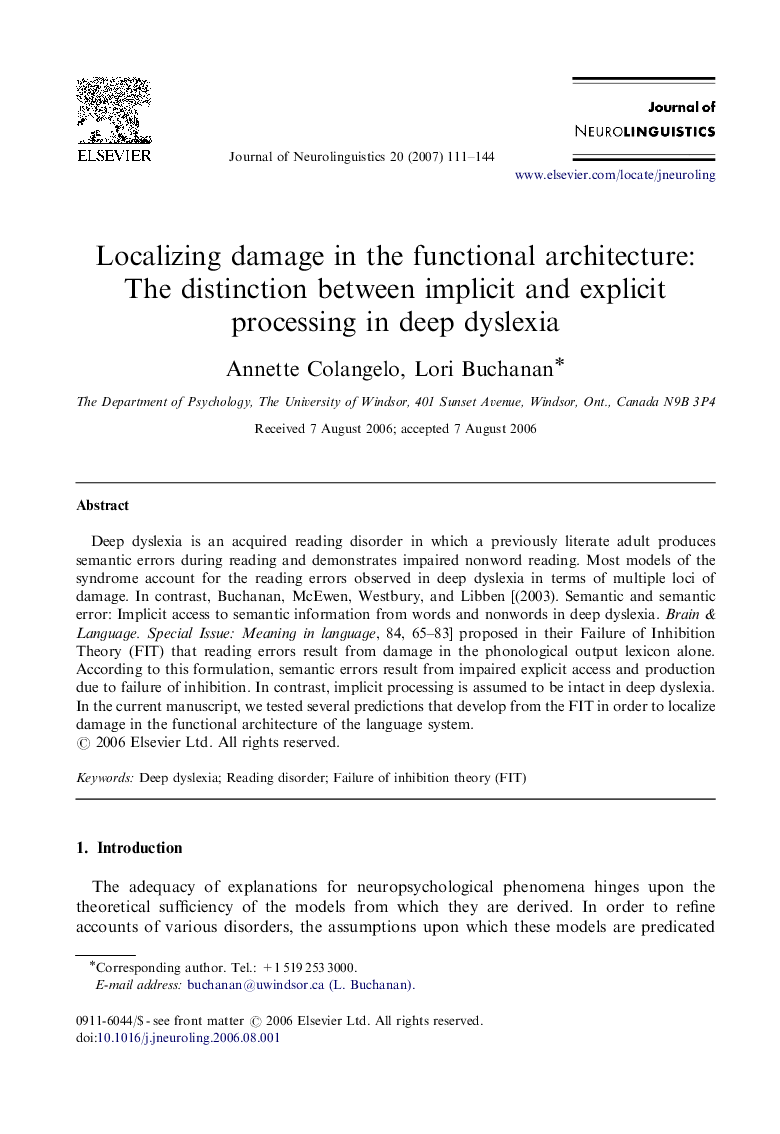| Article ID | Journal | Published Year | Pages | File Type |
|---|---|---|---|---|
| 912119 | Journal of Neurolinguistics | 2007 | 34 Pages |
Deep dyslexia is an acquired reading disorder in which a previously literate adult produces semantic errors during reading and demonstrates impaired nonword reading. Most models of the syndrome account for the reading errors observed in deep dyslexia in terms of multiple loci of damage. In contrast, Buchanan, McEwen, Westbury, and Libben [(2003). Semantic and semantic error: Implicit access to semantic information from words and nonwords in deep dyslexia. Brain & Language. Special Issue: Meaning in language, 84, 65–83] proposed in their Failure of Inhibition Theory (FIT) that reading errors result from damage in the phonological output lexicon alone. According to this formulation, semantic errors result from impaired explicit access and production due to failure of inhibition. In contrast, implicit processing is assumed to be intact in deep dyslexia. In the current manuscript, we tested several predictions that develop from the FIT in order to localize damage in the functional architecture of the language system.
